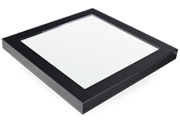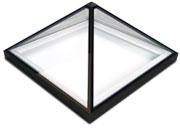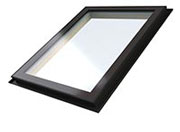Understanding and Preventing Skylight Condensation
Condensation on skylights is a common issue that can affect both homeowners and builders. It occurs when warm, moist air meets a cooler surface, causing water droplets to form. This can lead to water damage, mold growth, and decreased skylight efficiency. However, with the right understanding and proper installation, these problems can be minimized or even avoided altogether.
Why Condensation Forms on Skylights
Condensation typically forms on skylights for several reasons:
- Temperature Differences: Warm air inside a home rises and meets the cooler surface of a skylight, leading to condensation.
- Humidity Levels: High indoor humidity increases the likelihood of condensation forming on skylights.
- Poor Insulation: Inadequately insulated skylights or surrounding structures can create cold spots that promote condensation.
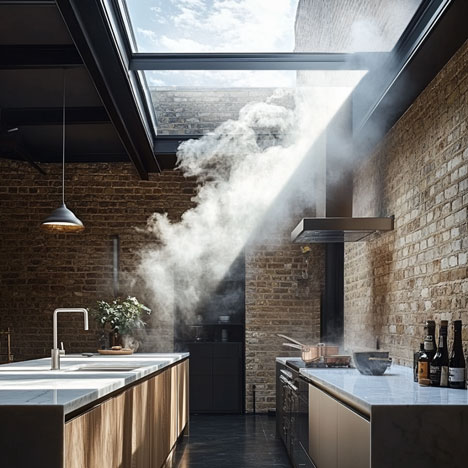
Diagnosing the Problem
To effectively address skylight condensation, it’s crucial to determine whether the issue lies with the skylight itself or the environment. Consider the following questions to diagnose the problem:
Is your rooflight single, double, or triple glazed?
Single-glazed units lack the thermal insulation provided by double or triple glazing, making them more prone to condensation. Upgrading to double or triple glazing can drastically reduce this issue by ensuring better thermal performance.
Where is the condensation forming?
Internal Face: Condensation on the internal surface of the glass usually indicates high indoor humidity.
Within the Cavity: If condensation forms between the panes, the unit’s seal has likely failed, compromising its thermal performance. This often requires replacing the skylight.
External Face: Rarely, condensation may appear on the external surface due to specific environmental conditions or incorrect placement of the low-E coating. A Low-E reader or a product like Ritec Easyclean can help manage this.
What is the age and condition of the skylight?
Older skylights may not meet current building standards for thermal efficiency, making them more susceptible to condensation. Sealing the skylight with silicone or using insulating measures like foam tape or window shrink film can help, but replacing the skylight with a modern, double or triple-glazed unit is often the best long-term solution.
Is there any air leakage?
Air leakage can introduce cold air, leading to condensation. To check for leaks, run your finger around the internal edge of the glass. If you feel air being drawn out, resealing the area may resolve the issue.
If you are confident that your skylight is thermally efficient and free from air leakage, the condensation may be due to environmental factors. Even the most efficient skylight can condensate in areas with excessive moisture, such as kitchens, utility rooms, or pools.

Overcoming Condensation Issues
To reduce or eliminate condensation on skylights, consider these solutions:
Improved Ventilation
Increasing airflow can reduce indoor humidity, thereby minimizing condensation. These are some options that may mitigate or solve the problem:
- Use Trickle Vents: If your windows or doors are equipped with trickle vents, ensure they are open to allow moisture to vent outside. Alternatively, simply opening a window or door can help reduce indoor humidity.
- Enhance Mechanical Ventilation: Utilize extractor fans or range hoods while cooking, or when using appliances like washers and dryers that add moisture to the air. Ensuring proper ventilation in these areas is key to preventing condensation.
- Smart Ventilation Solutions: Our EOS97 opener comes equipped with a Smart Switch that monitors humidity levels and automatically opens the rooflight when necessary. This innovative feature ensures optimal air circulation, reducing the risk of condensation. Consider upgrading your existing rooflight with this feature or opting for an EOS97 to enhance your home’s ventilation system.
Sealing Gaps
Sealing all gaps between the skylight and the surrounding structure is essential for reducing condensation risks. EOS Rooflights’ triple gasket system ensures an airtight seal, effectively minimising the potential for cold spots. To check for cold spots, you can run your finger along the edge of the glass or perform a smoke test. If the seal between the rooflight and its frame has deteriorated, it may be necessary to lift the rooflight and reseal it with silicone to restore an airtight connection.
Enhanced Insulation
Proper insulation around the skylight, including the use of insulated upstands, is crucial to preventing cold spots where condensation is likely to form. If replacing the skylight isn’t an option, a temporary solution is to apply shrink window film, which functions like secondary glazing. However, it’s essential to ensure the glass is airtight before applying the film; otherwise, moisture can get trapped behind it, leading to further issues.
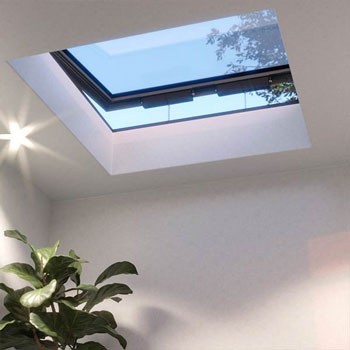
The EOS Advantage
At EOS Rooflights, our products are designed to minimize condensation issues through airtight and thermally efficient designs. Our insulated upstand with a triple gasket ensures a strong seal between the rooflight and upstand, preventing the cold spots that are common in other systems. Many skylight systems rely on builders to apply silicone seals or tape during installation, which can lead to issues if not done perfectly. Our system reduces this risk, ensuring better overall performance.
For builders looking to avoid condensation issues on future projects, specifying EOS Rooflights is a wise choice. Our systems not only offer superior insulation but also streamline the installation process by reducing the need for additional sealing materials.
Contact our team
If you have any questions, would like a bespoke price or want to enquire about our installation service. Give us a call or drop an email:
![]() 0208 462 3557
0208 462 3557

